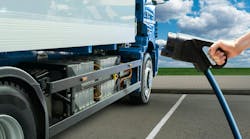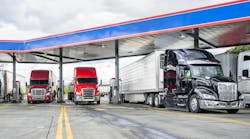WASHINGTON D.C. Hybrid truck OEMs and suppliers alongside fleets and public interest groups, gathered Thursday in the shadow of the U.S. Capitol to call for more incentives and other fiscal support to spur increased sales of this fuel-saving and emission-reducing technology.
“One of the big challenges right now is that, while the benefits of the [hybrid technology] are clear, because of low production volume, the costs are high,” Bill Van Amburg, senior vp at California-based Clean Transportation Technologies and Solutions (CalStart) told FleetOwner.
At a special rally dubbed “Hybrid Day on the Hill,” OEMs, fleets, CalStart and other hybrid technology advocates jointly called on Congress to find ways to help grow the use of hybrid trucks as a way to reduce U.S. oil consumption, reduce emissions, and create new jobs.
“Our hybrid trucks are all built in the U.S. – at plants in North and South Carolina,” said Dave Bryant, vocational sales manager for Freightliner Trucks. “So every hybrid truck we sell will employ U.S. workers. That’s why we need incentives to help make hybrid truck production self-sustaining.”
CalStart’s Amburg believes most hybrid commercial trucks are about twice the incremental cost that fleets can bear. “Fleets can bear some incremental cost for hybrids due to the benefits, such as fuel savings and reduced maintenance,” he explained. “But there’s a piece [of that incremental cost] that doesn’t fit their business case.”
Amburg thinks if the hybrid truck industry could get help covering about half of that incremental cost for just the next couple of years – through tax credits, rebates or some other sort of incentive program – it will allow fleets to significantly speed up their purchases of hybrids and thus create the volumes necessary to lower their costs.
“Instead of one and two truck purchases, we’d be looking at ten and twenty per fleet,” he stressed. “That kind of volume would lower the price. If we get to volume of 10,000 [hybrid] trucks per year, we think we’d be home free, in terms of technology produced at a cost that fleets could afford based on the [hybrid’s] benefits.”


